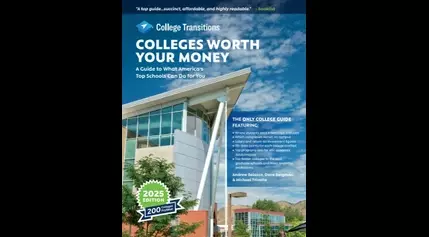The Soaring Cost of Convenience: Unraveling the Complexities of High Fast Food Prices
In a world where convenience has become a coveted commodity, the rising prices of fast food have left many consumers feeling the pinch. As inflation continues to impact the economy, the cost of a simple meal at popular fast-food chains has skyrocketed, leaving some questioning the fairness of these price hikes. However, a deeper examination reveals that the factors driving these increases are more nuanced than mere corporate greed.Unmasking the Realities Behind Surging Fast Food Prices
The Insatiable Appetite for Convenience
The demand for fast food has reached unprecedented levels, with a staggering 75% of Americans indulging in it at least once a week. This figure represents a significant increase from a generation ago, when only 40% of Americans reported consuming fast food on a weekly basis. This surge in demand, coupled with the inherent convenience and allure of fast-food offerings, has created a perfect storm for rising prices.Consumers are increasingly prioritizing the ease and speed of obtaining a meal, even if it comes at a higher cost. The bustling activity observed at fast-food establishments, with customers eagerly waiting in line and delivery workers bustling about, is a testament to the enduring appeal of these establishments. Despite the sticker shock, the demand for fast food remains remarkably resilient, as people seem unwilling to forgo the comfort and convenience it provides.
This insatiable appetite for fast food has given rise to a unique dynamic in the marketplace. As demand continues to outpace supply, prices have naturally risen to reflect the scarcity of resources and the increased costs of production. The efficiency and organization observed in the fast-food industry, with a well-oiled machine of cashiers, food preparers, and delivery personnel, further underscores the high demand that these establishments are catering to.
Inflation's Relentless Grip
Undoubtedly, the surge in fast-food prices can be attributed, in part, to the broader inflationary pressures plaguing the economy. The Federal Reserve's expansionary monetary policies, which have led to a roughly 33% increase in the money supply over the past 18 months, have fueled increased demand for goods and services, driving up consumer prices across the board.While inflation has impacted various sectors, the fast-food industry has been particularly susceptible to these rising costs. From the raw materials used in food production to the labor required to staff these establishments, the cumulative effect of inflationary pressures has resulted in a significant increase in the overall cost of operating a fast-food business. Consequently, these increased costs have been passed on to consumers in the form of higher menu prices.
It's important to note that the impact of inflation on fast-food prices is not uniform across the industry. Some establishments have managed to maintain relatively stable prices, while others have experienced more pronounced increases. This variability highlights the complex interplay of factors that influence pricing decisions in the fast-food landscape.
The Resilience of Consumer Demand
Despite the sticker shock associated with the rising cost of fast food, consumers have demonstrated a remarkable resilience in their demand for these convenient culinary options. Even as prices have soared, the majority of Americans continue to indulge in fast-food meals on a weekly basis, unwilling to forgo the comfort and familiarity they have come to associate with these establishments.This resilience in consumer demand can be attributed to the deeply ingrained cultural and psychological factors that drive our food preferences. Fast food, with its tantalizing flavors and familiar offerings, has become a staple in the lives of many Americans, making it difficult for them to simply abandon these habits, even in the face of higher prices.
Moreover, the convenience and time-saving benefits of fast food continue to hold significant appeal for consumers, particularly in today's fast-paced world. The ability to quickly and easily obtain a meal, without the hassle of meal planning, grocery shopping, and food preparation, remains a powerful draw for many individuals and families.
The Balancing Act of Pricing and Profitability
As fast-food chains grapple with the challenges of rising costs and heightened consumer expectations, they find themselves navigating a delicate balancing act between pricing and profitability. While the temptation to simply pass on the increased costs to consumers may seem like a straightforward solution, these establishments must carefully consider the potential impact on their customer base and long-term viability.The recent earnings report from McDonald's, which saw a profit miss and a decline in global sales growth, serves as a cautionary tale. Consumers, it seems, are becoming more discerning with their spending, and even the mighty golden arches are not immune to the effects of pricing pressures.
Fast-food chains must strike a careful balance, ensuring that their prices remain competitive and accessible to their target market, while also maintaining a level of profitability that allows them to sustain their operations and invest in future growth. This balancing act requires a deep understanding of consumer behavior, market dynamics, and the nuances of the fast-food industry.
The Evolving Landscape of Fast-Food Pricing
As the fast-food industry navigates the complexities of rising prices, it is clear that the landscape is undergoing a significant transformation. Consumers are becoming more price-conscious, and even the most loyal fast-food enthusiasts are beginning to reconsider their dining habits in the face of soaring costs.This shift in consumer behavior is not lost on industry leaders, who are closely monitoring the impact of pricing decisions on their bottom line. As McDonald's CEO Chris Kempczinski aptly observed, consumers are "more discriminating with every dollar they spend," a trend that is likely to continue as the economic landscape evolves.
The future of fast-food pricing will undoubtedly be shaped by a multitude of factors, from the ongoing battle against inflation to the changing preferences and priorities of consumers. As the industry adapts to these shifting dynamics, it will be crucial for fast-food chains to strike a delicate balance between maintaining profitability and ensuring that their offerings remain accessible and appealing to their loyal customer base.




















